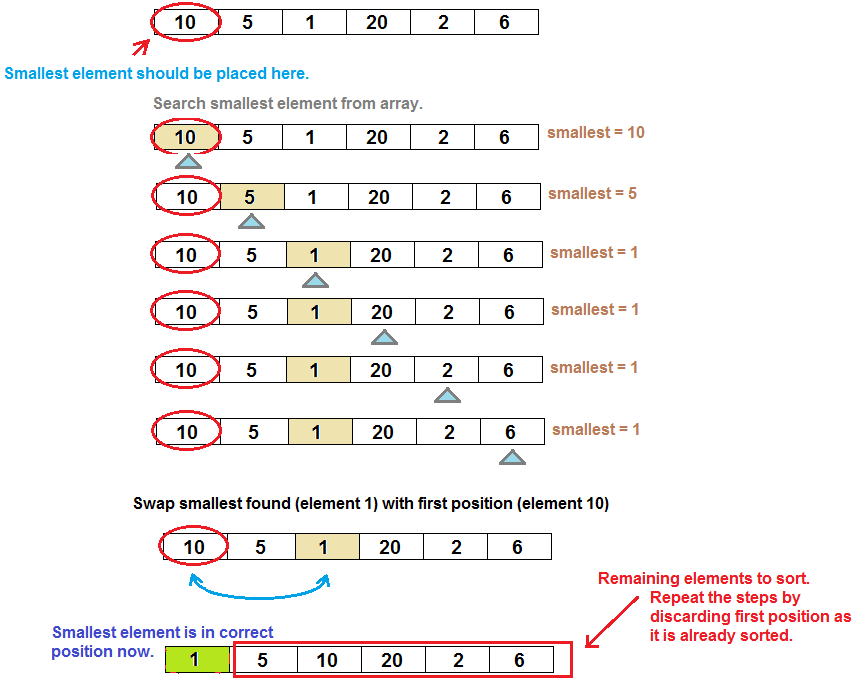✅ Selection Sort Code O(n²)
def selection_sort(arr):
for i in range(len(arr)): # Iterate through each index where the next smallest element should go
min = i # Assume current index holds the minimum
for inner in range(i+1, len(arr)): # Find the smallest in the remaining array
if arr[inner] < arr[min]:
min = inner
arr[i], arr[min] = arr[min], arr[i] # Swap found minimum with current position
return arr
📝 Quick Review for Fast Recall
- ✅ Set left-most element as smallest → Scan from left-most element+1 to n-1 → Find the smallest in the scan → Swap left-most with scanned-smallest → Repeat
- ✅ O(n²) complexity → Bad for large inputs
- ✅ O(1) space → In-place sorting
- ✅ Minimizes swaps → Useful for memory-constrained environments
- ✅ Not stable → Relative order of equal elements may change
- ✅ Use Case? When minimizing swaps is critical, like in limited memory write scenarios. Otherwise, go for better algorithms.
- ✅ Better alternatives? QuickSort (O(n log n)), MergeSort (O(n log n))
⏳ Time Complexity & Number of Operations (Selection Sort)
- ✅ Best Case (Already Sorted): O(n²) → Still iterates fully but minimal swaps
- ✅ Worst Case (Reverse Sorted): O(n²) → Maximum comparisons and swaps
- ✅ Average Case (Random Order): O(n²) → Consistently inefficient for large datasets
- ✅ Space: O(1) → In-place sorting
- ✅ Total comparisons: (n² - n) / 2
- ✅ Total swaps: O(n)
⚠️ Traps & Things to Watch Out For
- Misplacing swap logic: Swap should happen after finding the minimum, not inside the inner loop.
- Wrong index comparison: Always compare
arr[j] < arr[min], not arr[i] < arr[min]. - Inefficiency for large inputs: Not optimal for big datasets—mention better alternatives like QuickSort or MergeSort.
- Avoid using "min" as a variable name (Python has a built-in
min() function). Rename to min_ind if necessary. - Selection Sort vs. Bubble Sort?
- Selection sort minimizes swaps but has the same time complexity.
- Bubble sort is stable, but Selection Sort is not.
Selection Sort Explanation
